It’s rare for me to audibly gasp from surprise, but that was exactly how I reacted in 2019 when I rounded the corner to the Chicago Field Museum’s “Evolving Planet” exhibit, and came face-to-face with the colossus now standing guard outside the exhibit entrance. When preparation began for installing Maximo the Patagotitan in the Field’s main hall, while Sue the T. rex was moved to an expanded exhibit upstairs, a variety of other new displays were also added to their growing prehistoric life collection. Included among these updates were an assortment of pterosaur models commissioned from Blue Rhino Studio, the most noticeable of which being a pair of giant Quetzalcoatlus looming from the upper floor.
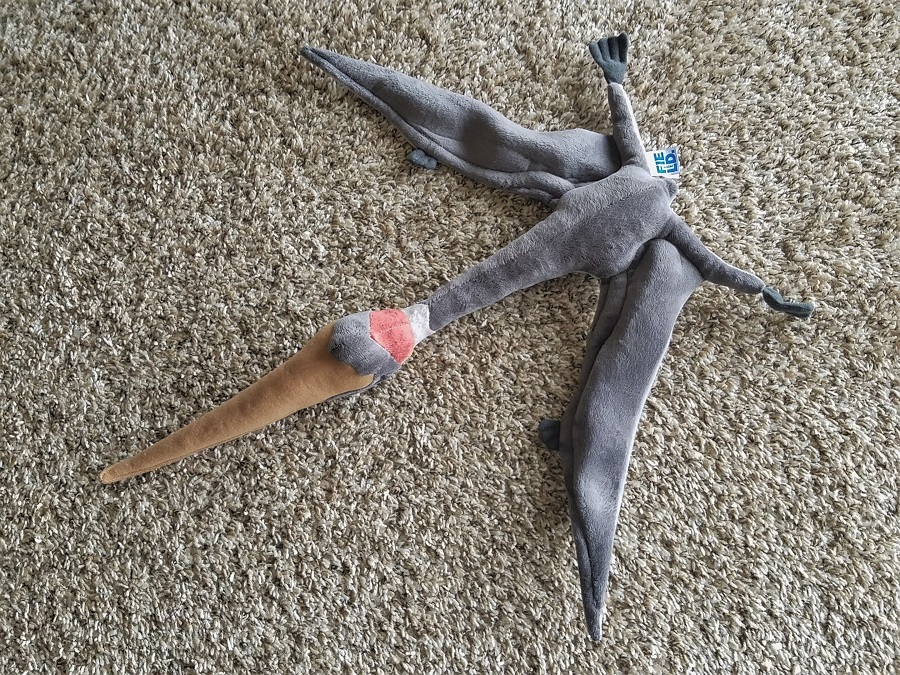
Named after the mythical Aztec god, Quetzalcoatlus is one of the biggest – if not THE absolute biggest – pterosaurs to ever live, and by extension all flying animals in history. The past couple of decades have been a boon for studies of Quetzalcoatlus and its close relatives in the azhdarchid clade, so their new inclusion in the Field’s exhibits (especially as a near-contemporary to Tyrannosauruses like Sue) seems almost natural, and certainly welcome. New exhibits also mean new merchandising opportunities, and one of the Field’s recent store items of note is a large plush of the very-large pterosaur. The Field also released a revised Sue plush that is worth attention, but I’d be lying if I said the Quetzalcoatlus didn’t catch my eye first with little contest.
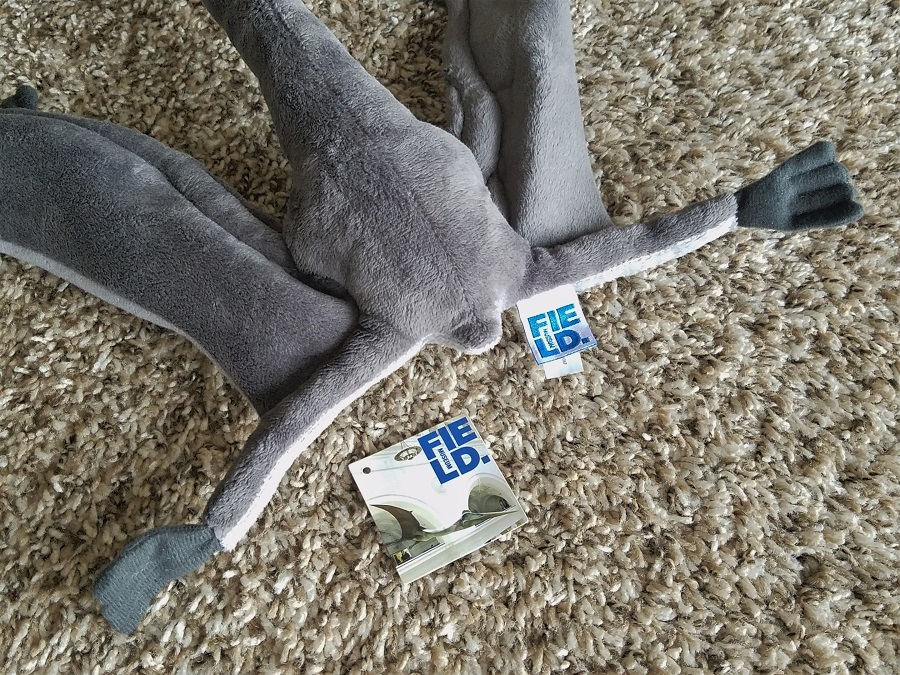
Quetzalcoatlus is known from two species: Q. lawsoni and Q. northropi, the latter of which is more popular for its greater size, and presumably the species represented by the Field in both exhibit model and plush toy. Although Q. northropi is only known from fragmentary remains, size estimates based on comparisons with Q. lawsoni place the 54-cm(21 in)-long plush at about 1:13 scale (or perhaps 1:15 by wing proportions). The plush is a very wiry figure, figuratively and literally; Quetzalcoatlus was an animal of long and lanky proportions, and the plush features a bendable wire frame to support the neck and wings while enhancing playability. Acknowledging some liberties taken for designing a plush toy, Quetzalcoatlus appears almost shockingly close to current skeletal reconstructions, emphasizing the bizarrely small torso and absurdly long neck and head of the real animal. The wings are appropriately wide and narrow, with the hind legs spread to match the connected membranes. With all appendages extended at reasonable angles, Quetzalcoatlus almost looks like some kind of flying, five-point plush starfish.
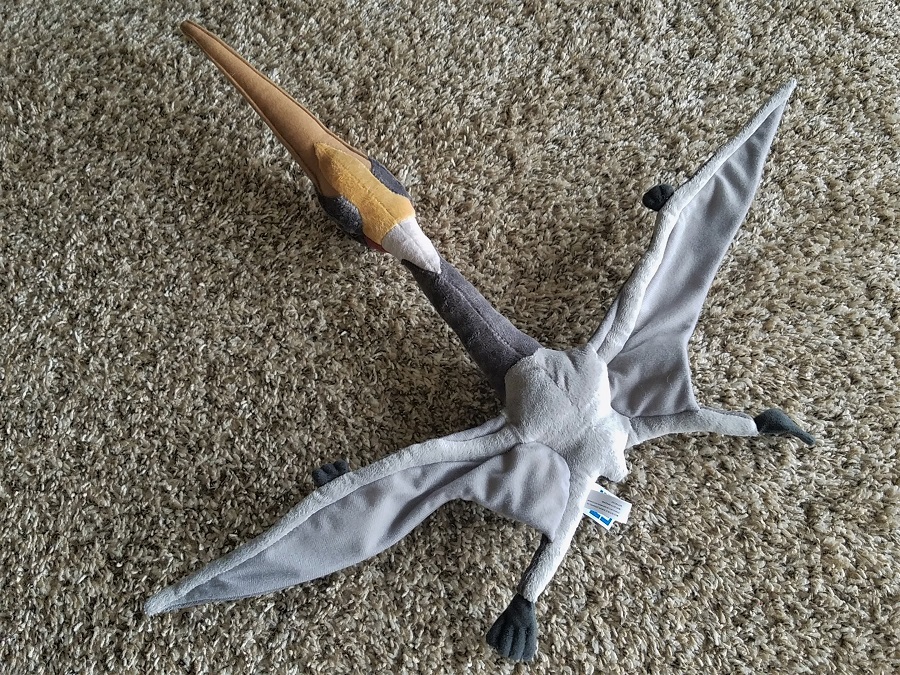
While the head-to-neck ratio has been tweaked in favor of a larger, softer head, the positioning and dimensions of the eyes and the (conservatively small) head crest are very close to the known azhdarchid fossils. The wings are also quite accurate, with the elongated wing finger just barely matching the shoulder-to-wrist length, but not surpassing it. Hands and feet feature the correct number of digits; however the membranes actually connect to the legs differently than most models, attaching precisely at the knee instead of just above or below, or at the ankles instead. No membrane from the back of the leg to the tail is present either.

The two wires, which frame the toy and provide articulation, are anchored in the torso; the neck holds its shape posed straight out, while the wings articulate with essentially a swivel joint at the shoulder. The wingspan can stretched out to a pose fully perpendicular to the neck, or they can be tucked and folded to the shape of one’s choice to emulate flying or walking poses. The one catch to this is, because of the “swiveling” wire, it might be tricky to make the toy hold a standing pose. The wire in the neck is similarly versatile, although the thicker material hinders motion a little bit. Naturally, any amount of wire-bending should be done with care, since wires can break over time.
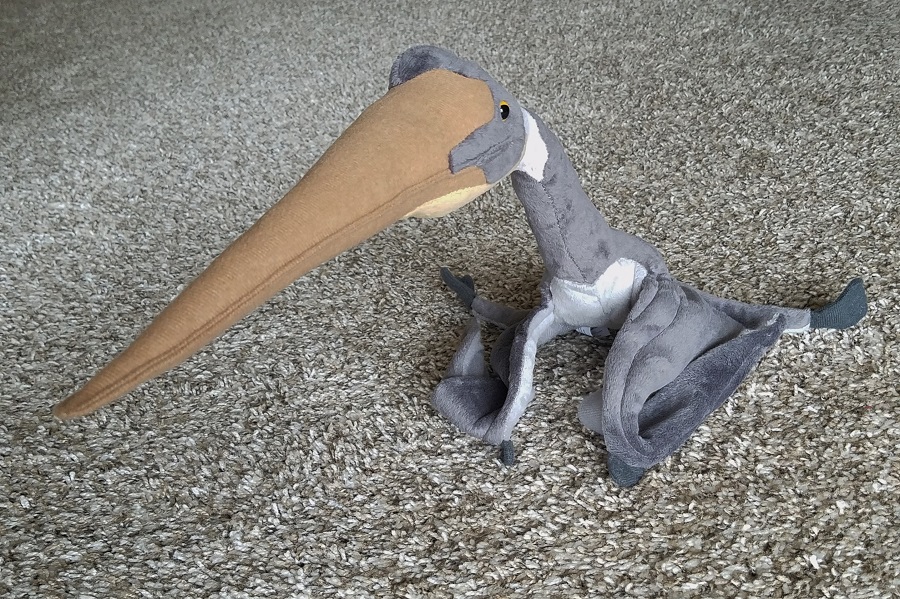
The toy’s colors are simplistic but effective, reflecting the appearance of Blue Rhino’s statues at the exhibit. The toy is a solid gray over most of the body, with a lighter gray underside; red and white patches like a crane distinguish where the neck and head attach. The bill is is a sandpaper-brown, and the plastic eyes are an amber hue with large black pupils. The bill and feet are also the only parts of the body with a “barer” fabric; most of the toy features a very short coat of polyester fuzz, which is actually quite fitting for a pterosaur that was likely covered in hairlike pycnofibres in life.
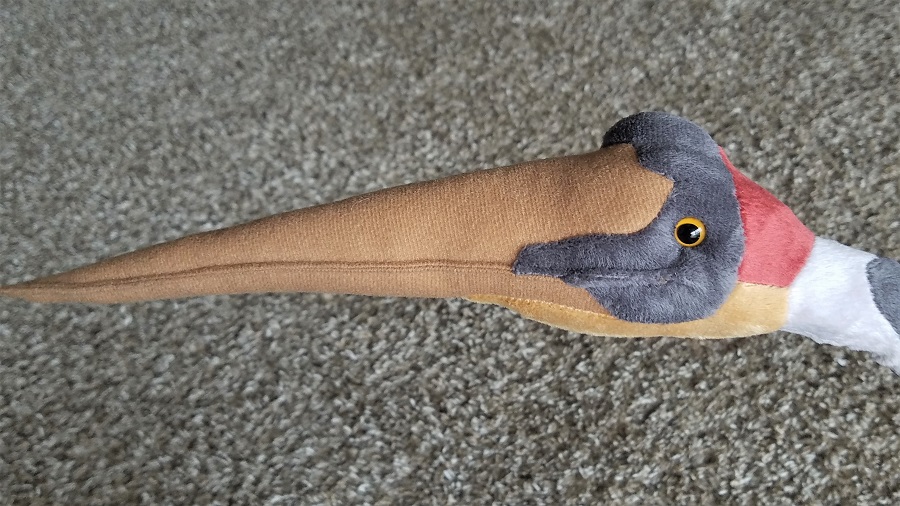
There are a number of Quetzalcoatlus that have been released over the years, with varying degrees of success. I wouldn’t have expected a plush of all things to beat most hard plastic figurines in accuracy and appeal; but lo and behold, here we are. The Field Museum’s Quetzalcoatlus plush, courtesy of Wild Republic, is a genuinely great toy and a fine addition to any pterosaur fan’s collection. As a Museum-exclusive item, you can either purchase it from the Field’s online shop, or you can take the excuse to visit the Museum in person and purchase it first-hand from the various on-site gift shops.
Disclaimer: links to Ebay and Amazon on the DinoToyBlog are affiliate links, so we make a small commission if you use them. Thanks for supporting us!




This is so precious, I’m getting one.
you really made me get the cuteness of it..
Love it! Wish I could get one for my kids!